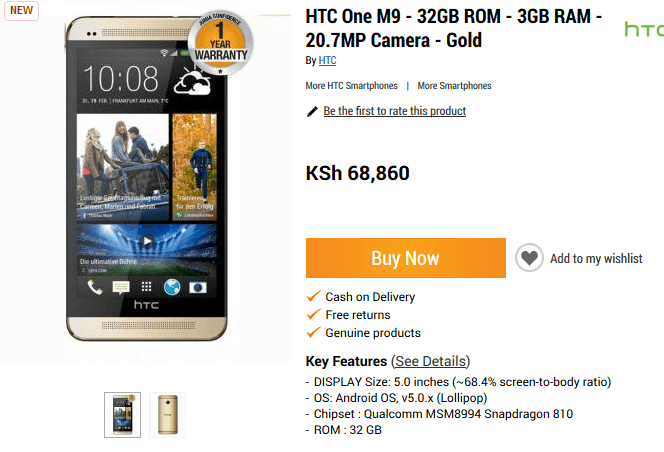In today’s increasingly digitally connected world, the prevalence of smartphones is undeniable. People rely on their mobile devices for work, communication, entertainment, and personal data storage. However, these devices also hold sensitive information and are susceptible to theft. A phone being stolen can cause significant emotional distress, financial loss, and security concerns among its owners. This article delves into the consequences of losing a phone, offers guidance on recovering it, and provides preventative measures for safeguarding one’s device against potential future incidents.
The Impact of Stolen Phones
Phones and smartphones are very useful tools and when taken away from us will definitely make us feel the absence of it from communicating with family, friends and work colleagues to missing important notification in emergencies not to mention the emotional distress and financial hole that is left behind.
Here is a list of impact of stolen phones:
- Emotional distress: Losing a smartphone can lead to feelings of frustration, panic, or even shock, especially if it contains personal data. The disruption in daily routines and the sudden loss of connection with friends and family can result in increased stress levels and affect overall productivity and well-being.
- Financial losses: Stolen phones often contain valuable information like credit card details, bank account numbers, or digital wallet data, which makes individuals vulnerable to fraudulent transactions, resulting in financial setbacks.
- Data loss and privacy breaches: Personal information such as photographs, emails, text messages, and apps with stored passwords may be compromised, causing severe implications for the user’s personal life if not secured or backed up properly.
- Impacts on professional and personal relationships: Theft can lead to an inability to access necessary work documents or applications used daily, disrupting work-related tasks and responsibilities. It might also affect social interactions due to a lack of communication with loved ones.
- Privacy intrusion and identity theft: Thieves can use the stolen device for illegal activities like data mining, which could lead to further privacy violations and potential identity theft, impacting one’s reputation and trust in future transactions and interactions.
- Risk of stolen information being used against the user: Criminals may use the stolen details for blackmail or scams involving relatives, friends, or colleagues, causing emotional harm and strains in personal relationships.
- Possible damage to digital footprint: A lost phone might lead to unauthorized access to social media accounts, which can be detrimental to one’s online reputation, particularly if the thief uses the device for malicious purposes like sharing offensive content or making unwanted posts.
Despite varying levels of impact, recovering a phone is your next logical step.
Recovering a Stolen Phone
Once you realize your phone is stolen, take these steps:
- Immediate action: Upon realizing your phone has gone missing, promptly report it as lost or stolen with service providers (phone carriers) to prevent unauthorized use of the SIM card and block future transactions. Contact the police department for further assistance, especially if the device is expensive or contains sensitive data.
- Use Find My Phone feature: Many smartphones offer a built-in tracking system that allows users to locate their missing gadgets remotely using the Internet connection. Google’s Find Device and Apple’s Find Devices are examples of such features. These services might help in locating the phone and alerting others around it, making recovery attempts more feasible.
- Tracking through third-party apps: There are other tracking applications available on app stores like Prey: Find My Phone & Security or Cerberus that can assist users in keeping track of their devices if not integrated with the device manufacturer’s built-in options. It’s essential to install and activate these services beforehand, ideally using strong password protection.
- Inform your contacts: Alert close friends and family about the missing phone so they are aware when suspicious activities are initiated from it.
- Contact financial institutions: Update all banks, credit card companies, or other service providers with whom you have accounts registered on the stolen device to cancel affected cards/accounts immediately and monitor account activity for irregular transactions.
- Protect personal data: Change passwords for email accounts, social media platforms, and online accounts associated with the phone to minimize potential damage from identity theft or scams.
- Report identity theft if necessary: If you suspect that your identity has been compromised by the stolen device, file a report with the Federal Trade Commission (FTC) in the United States, or relevant authorities in other countries for proper assistance and legal intervention.
- Back up crucial information: Store essential data on cloud services, external hard drives, or in offline devices to ensure the safety of vital content, even if the phone is not recovered.
- File a police report: Seek law enforcement’s help to file an official complaint and gather evidence for future legal proceedings against the culprit.
- Recovering personal data: Retrace your digital footprint, particularly in social media channels, and regain control over compromised accounts.

The steps above may vary depending on country and applicability. Tracking through third party may not be applicable if you never installed to start with. The best tracking apps are the ones that come preinstalled in your phone, Find Devices.
Preventative Measures
If we could completely prevent our phones from being stolen, we would do it but that is not possible. However, there are steps you can take to minimize and prevent it.
These are some preventive measures to prevent or at least limit your phone from being stolen.
- Enhancing device security: Enable two-step verification for online accounts to add another layer of protection against unauthorized access. Utilize unique, complex passwords, biometric authentication (e.g., fingerprint or face ID), and regularly update devices with the latest software updates.
- Avoid sharing too much personal data on social media: Limit publicly available information on platforms that can be accessed remotely through a smartphone, reducing chances of identity theft or unwarranted intrusions into one’s private life.
- Be cautious in public spaces: Adhere to safety protocols while using the phone in public places like avoiding charging it at unattended stations and not leaving it unattended even for brief moments.
- Protect your PIN, passwords, or biometric data: Avoid disclosing sensitive information to strangers or giving devices to unfamiliar individuals. Keep these details private.
- Consider physical security measures: Use phone cases with a strap, sling holsters, or invest in anti-theft accessories like the PopSockets PopGrip that makes it harder for potential thieves to snatch the phone.
- Secure devices when left unattended: Ensure your smartphone is out of sight and within reach during meetings or in crowded places where pickpocketing might occur.
- Implement remote lockdown: Activate device-locking features like Android’s Find My Device, Samsung’s “Find My Mobile,” or Apple’s Lost Mode to remotely render the phone inoperable if lost or stolen.
- Avoid leaving devices unattended in vehicles: Thieves might target cars and leave them unlocked, so ensure they are concealed from sight and locked when not in use.
- Be vigilant around crowds: Keep a watchful eye while at events with high-volume attendees or where distractions occur, such as concerts or gatherings.
- Be cautious while charging devices: Avoid leaving your phone unattended when public charging stations are utilized and only connect to trusted charging points.
- Encrypt data on the device: Enable encryption features like Apple’s FileVault or Android’s encrypted storage, which protects sensitive information should the device be compromised.
- Educate oneself on cybersecurity: Stay informed about emerging scams and security threats to recognize them better, preventing theft and misuse of your phone data.
- Utilize tracking software: Install applications that send real-time alerts if a SIM card is replaced or if the device is switched offline, allowing you to act promptly on locating your stolen phone.
- Invest in insurance coverage: Consider purchasing a phone insurance plan to cover losses due to theft, which can assist with replacing the device and safeguard against financial burdens resulting from lost data or unauthorized transactions.
As much as this is a long list of precautions, it is not an exhaustive list. Your phone’s security and other personal property is always your responsibility.
Conclusion
Losing a smartphone is an alarming experience that can affect various aspects of life, including emotional well-being, finances, relationships, and personal privacy. Immediate actions to recover the stolen device should involve reporting it to the authorities, service providers, utilizing tracking tools, and notifying contacts while simultaneously protecting oneself against potential data misuse or identity theft. By taking precautionary measures like enhancing security features, monitoring sensitive information, remaining aware of surroundings, and safeguarding personal details, users can minimize risks and ensure better protection of their mobile devices. As smartphones continue to play a vital role in everyday life, it is crucial to address the consequences of theft responsibly and take preventive steps to limit such incidents from occurring or mitigating the fallout if they do occur.


